[Snowdrops (c1935), woodcut by Mabel Royds]
A short and sweet post this week on a short and sweet subject: snowdrops.
I am fond of many words which end with -drops: gumdrops, raindrops, teardrops, lemon drops. They have an onomatopoeic quality to them, or maybe it’s that the letters d, o and p themselves form little drops on the page. And I’ve loved the sound of ‘snowdrops’ ever since Dana opened ‘All Kinds of Everything’ with it - and won the 1970 Eurovision Song Contest.*
So I’m always primed in January to look for emerging snowdrops; the French word for them - perce-neige - is just perfect, even when there’s no snow for them to pierce. They’ve been breaking through for a little while, and now it’s full-on snowdrop time in the Botanic Garden.
[Cambridge Botanic Garden]
It’s filled with huge clumps and drifts of many varieties, and wafts and clouds of their very particular scent. It’s been nice enough to sit outside for a coffee, surrounded by the tiny pure white flowers with all sorts of delicate emerald green markings, bobbing and fluttering, and making me feel that we’ve turned a seasonal corner.
[Galanthus ‘S. Arnott’]
I’d never grown snowdrops, but two years ago I planted a few Galanthus ‘S. Arnott’ ‘in the green’ on the allotment. Nothing happened last spring, but this year we have eight or so flowers, and I was so delighted that I allowed myself to pick a couple for the kitchen table.
[Snowdrops in Winter, Bankshead (1969), Winifred Nicholson]
I don’t imagine many people ever have anything other than a tiny posy of snowdrops, but the taller varieties with large flowers in the Botanic Garden had me wishing I could pick a few huge bunches without being caught.
[Snowdrops and Winter Jasmine, woodcut by Matt Underwood]
Fortunately though, despite not being able to fill lots of pots and vases with them, snowdrops are brilliant subjects for artists who demonstrate that a few go a long way.
[Crocus and Snowdrops (c1922), woodcut by John Hall Thorpe (1874-1947]
And with their smooth petals and simple, clear, instantly recognisable shapes they suit small woodcuts and linocuts and perfectly.
[Snowdrops by Tim Fowler]
In fact, they don’t even need to be painted in natural colours for us to know what they are. Little drops of pure, clean, early spring.
[detail of 2019 window in St John, Langcliffe, by Ann Sotheran]
Happy Sunday!
* ‘Raindrops’ is also a good song opener, as in ‘My Favourite Things’ and ‘Raindrops Keep Fallin’ on My Head’ - take your pick.


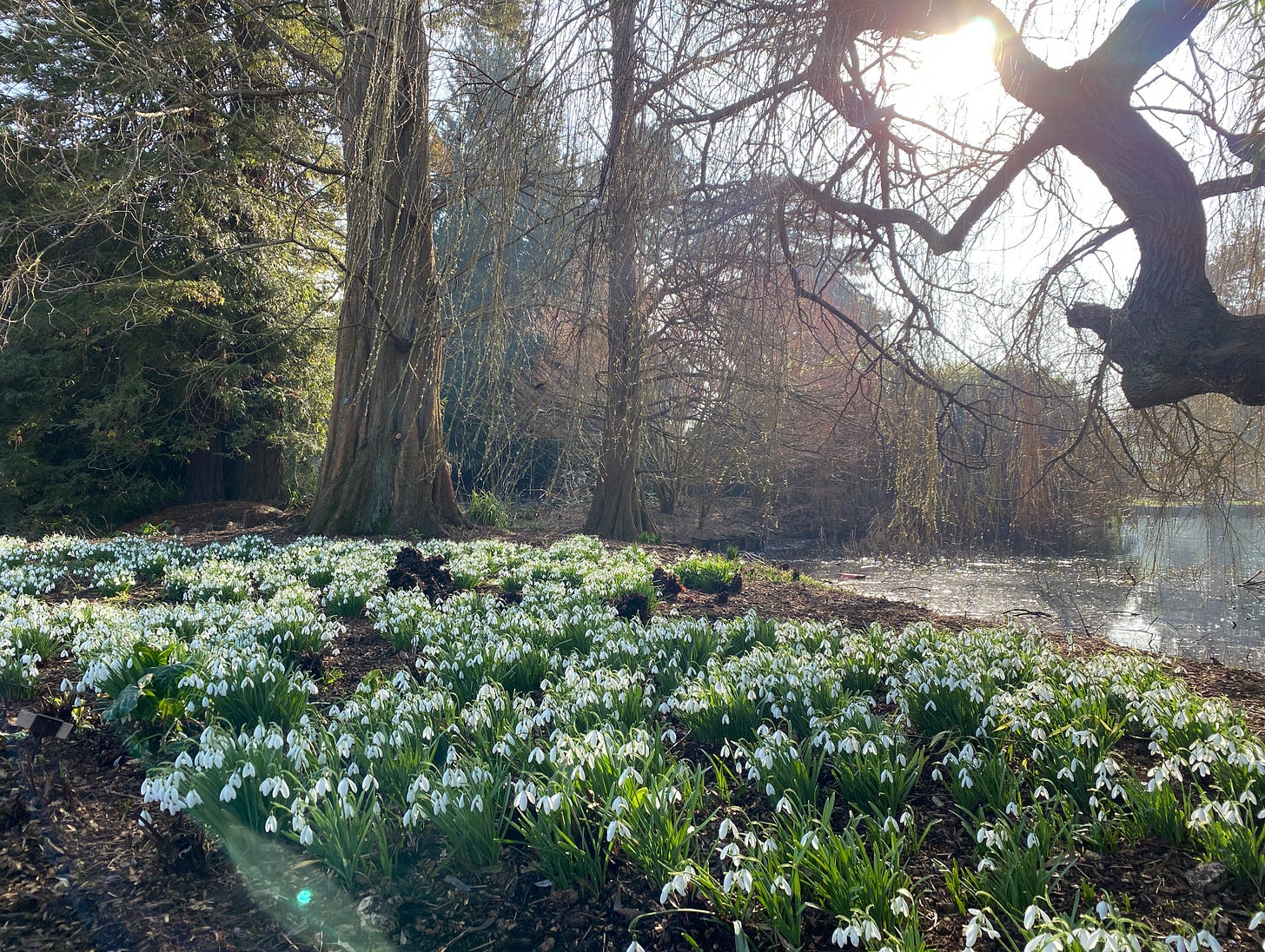
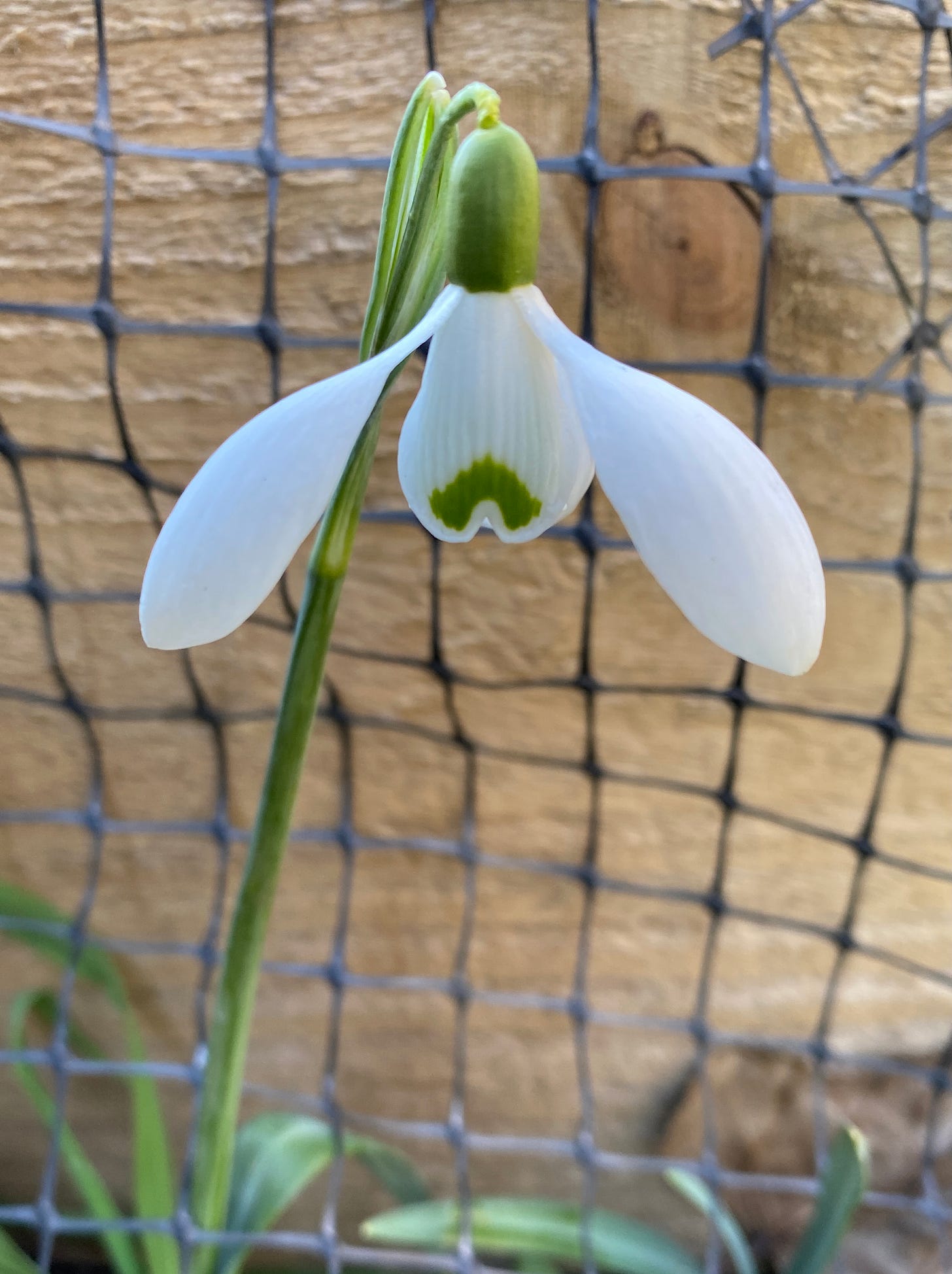
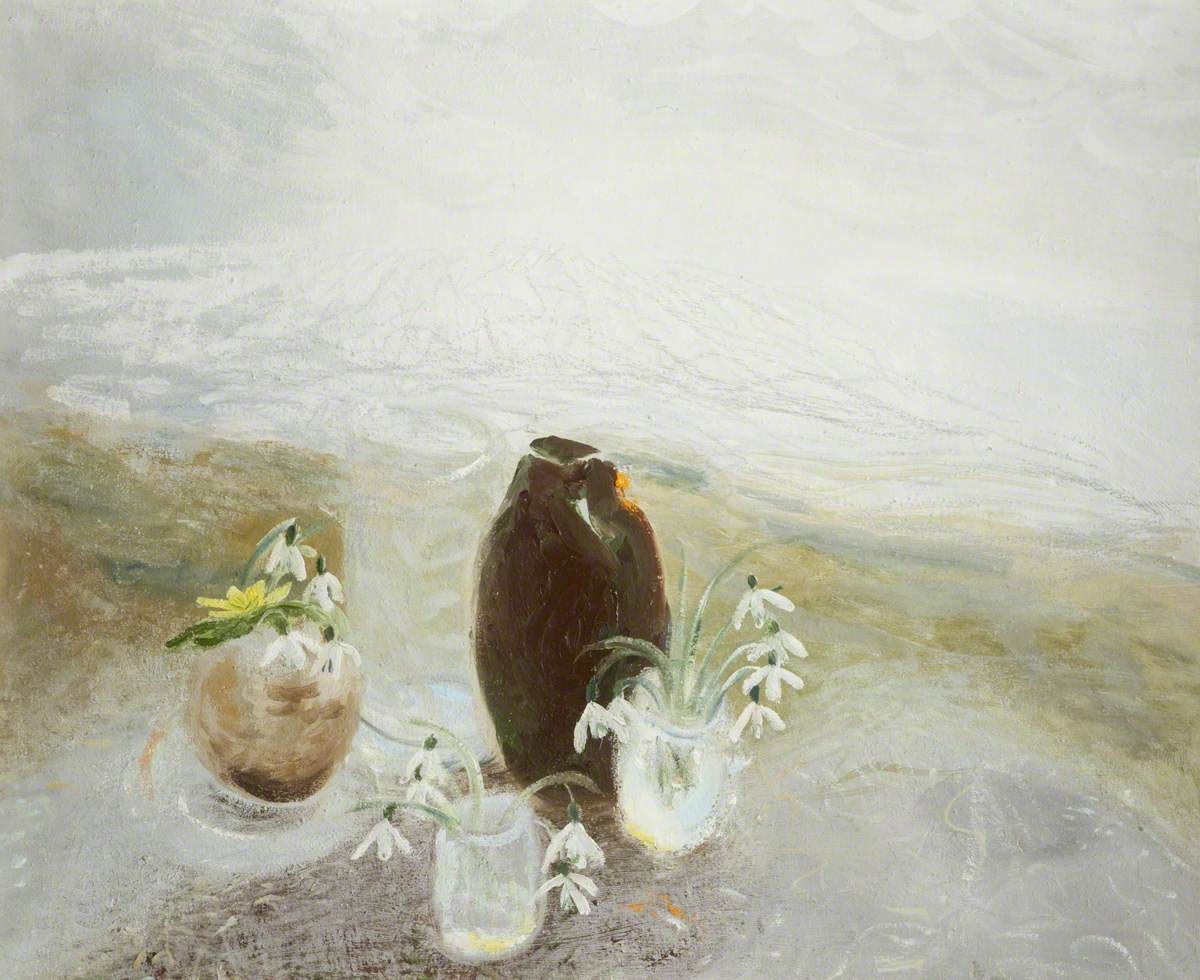
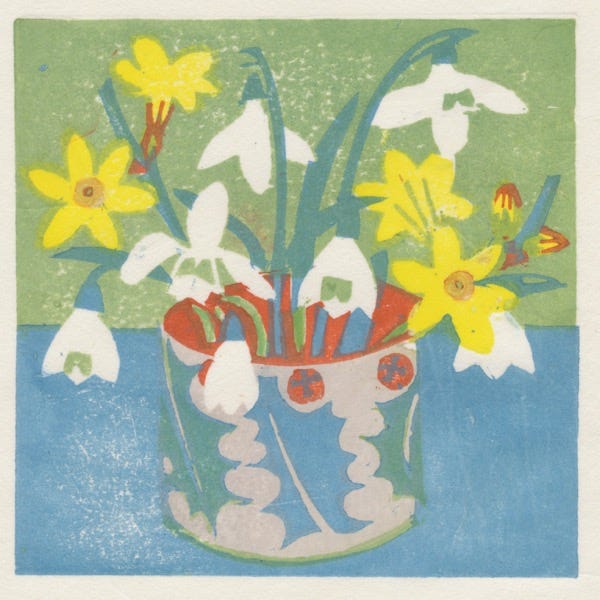
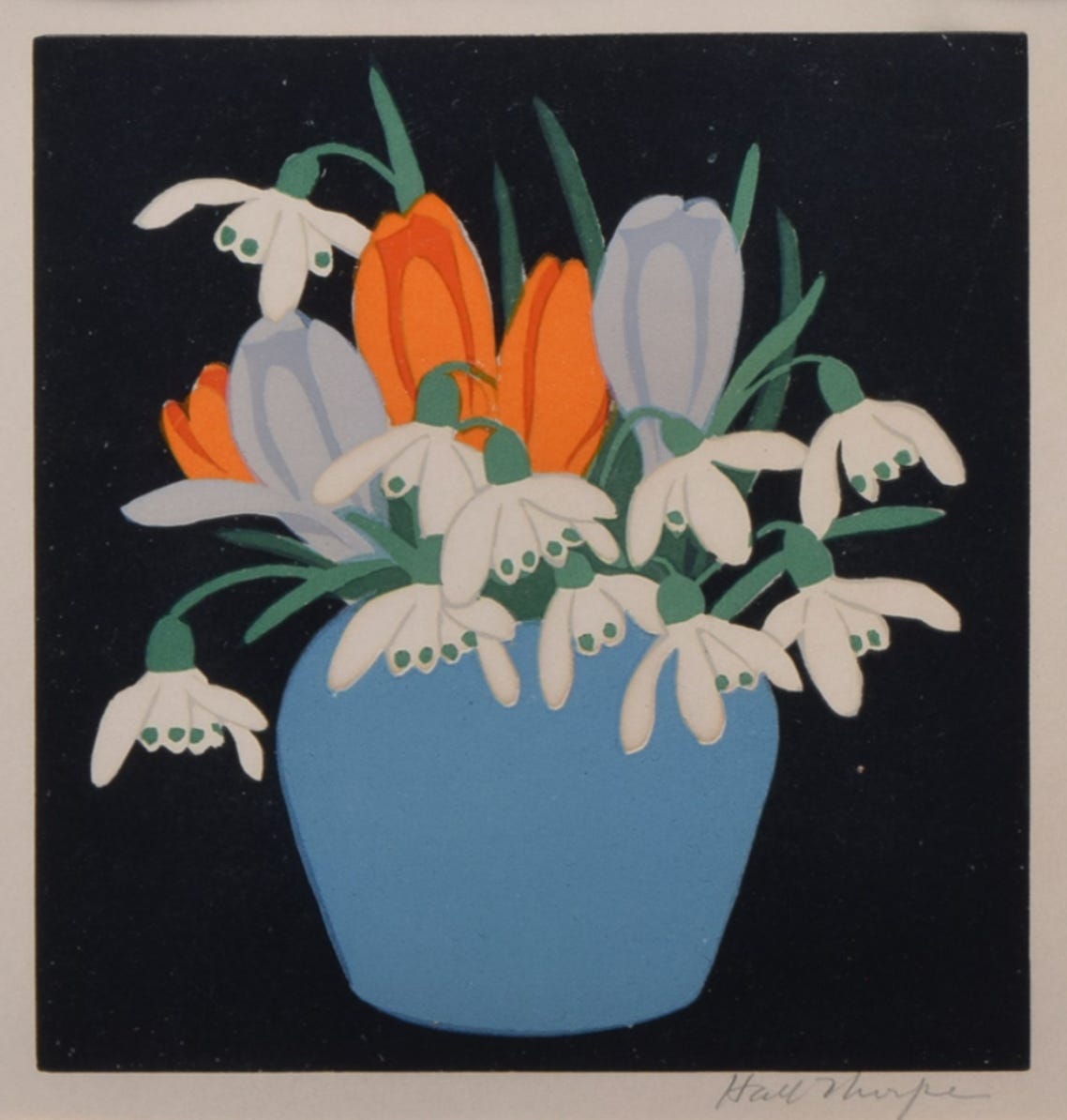
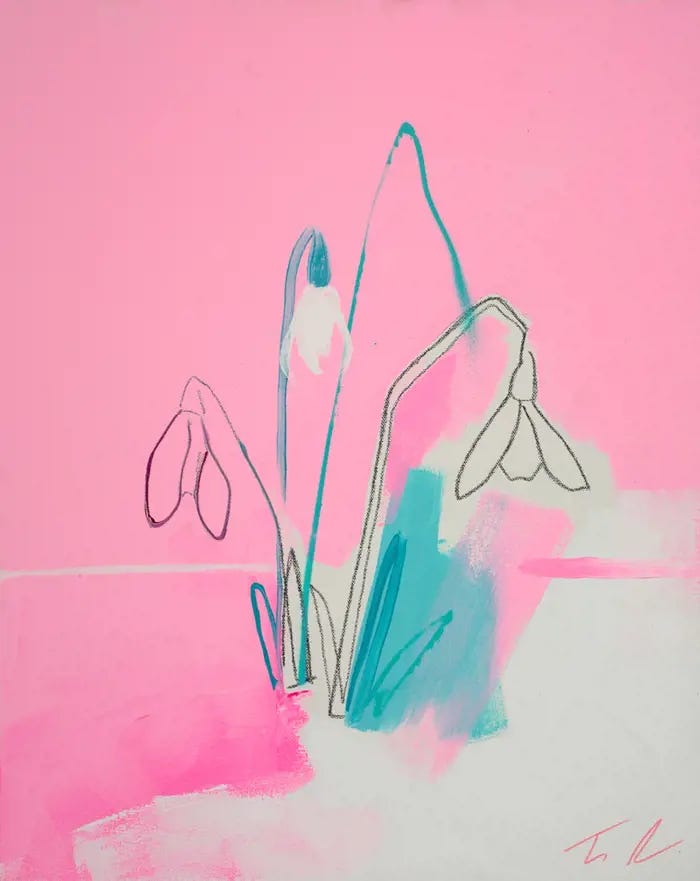

This may have been short but it was very sweet. I always like to find a snowdrop on New Year’s Day not alas in our garden, where I have made numerous attempts to grow them in the green but they seem to disappear without trace. As often happens with your writing I am taken down rabbit holes of further discoveries - this time it is the Peace Window in St John’s church Langliffe and a curiosity to see the window and to discover the website of the artist Ann Sotheran.
This is my third favourite of your substack newsletters; the first being the New Year’s Day one and second one being the milk bottle one. I think you would do a really good ‘pegging out’ one so many great paintings around on the topic including the one hitherto unknown by me on today’s Persephone Post.
Finally I would like to you for telling us about Oliver Burkeman whose podcasts I found so interesting. So many resonations (have I made up a word) with all the things I’ve mentioned.
Thank you Jane. 😊
What an uplifting post, which managed to transform my mood this morning, sad at the anniversary of my mother’s death. I would love any of the images you have posted, but I particularly loved the tremendous energy of the Mabel Royds woodcut, full of the promise of all conquering spring!